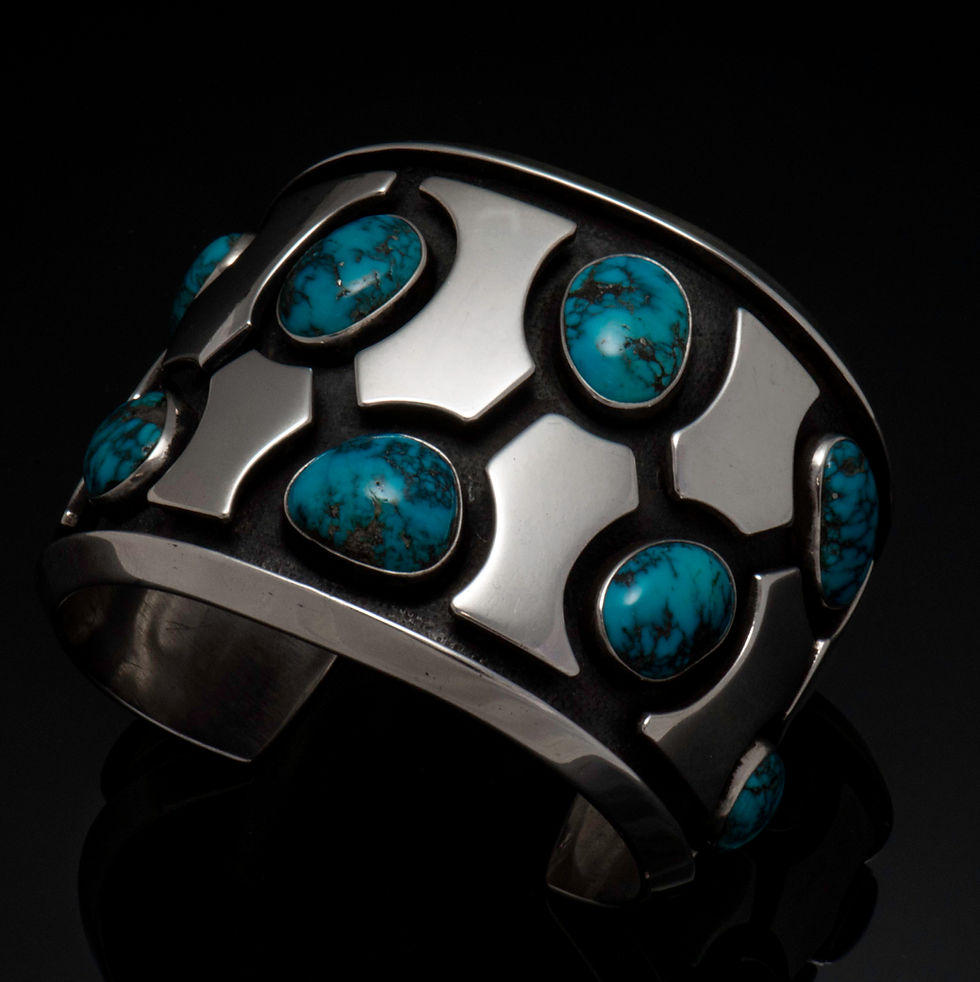Turquoise = Victory
- Dec 21, 2020
- 3 min read
Updated: Sep 5, 2021
Persian turquoise has long been a part of turquoise in America. Among the first turquoise known in the west came from the famous gem merchant Jean Baptiste Tavernier who made his fortune selling gemstones to Louis XIV during the mid-17th century. While most famous as a diamond merchant, including the Hope Diamond, he first entered the trade introducing turquoise to the French court. At that time turquoise was considered on a par with other colored gemstones including rubies and emeralds.
The name in French, pierre turquoise (Turkish stone), comes from the misconception that the stone originated in Turkey due to the most common trade routes of the time. Turquoise remained popular in jewelry but the trade was restricted to the aristocracy until the Victorian period when the development of an affluent middle class created demand for Victorian jewelry. This demand extended to the young United States and New York jewelers, including Tiffany & Company, created ornate jewelry using small calibrated cabochons of clear sky-blue turquoise set in cluster settings with other gemstones. The source for turquoise, as for Europe, remained the old trade connections with Persia.
The finest turquoise in Persia, now Iran, comes from the Nishapur area in the northeast of the country. Although the earliest discovery of turquoise in Persia dates to probably the 12th century, the peak of production occurred between 1370-1722 during the Timurid and Safavid dynasties. For an excellent history of Persian turquoise read Sky Blue Stone by Arash Khazeni (UC Press, 2014).

Persian classic. Photo Mike Ryan II.
The Shah controlled the turquoise mines and had first choice of the finest stones. The Persian word for turquoise, furuza, is similar to the word for victory, piruzi. The stone was considered to possess special qualities that would bring victory in battle and the Shah would put high grade turquoise onto the armor and weapons of his soldiers.
During the 1880’s, although the turquoise mines in the southwest were known, there was little demand because the east coast jewelers continued to buy from Persia. George Kuntz, a noted gemologist had a low opinion of US turquoise during the 1880's. This attitude changed dramatically by the early 1890’s when Kuntz, who also happened to be the chief gemologist for Tiffany & Company, wrote that the turquoise from Cerrillos New Mexico was among the finest in the world.
This change may be attributed, in large part, to changes in the Persian market. By the 1880’s a new Shah, wishing to modernize his backward country had hired a German to serve as his chief minister and the country was modernized in large part. While this served well in many areas of the economy, the turquoise trade, long dominated by tribal clans who did not like being employees of the State ,neglected the mines and production and quality dropped dramatically although world demand remained high thus increasing prices. This story is covered in Part One of Turquoise in America, The Great American Turquoise Rush 1890-1910.
With the end of the Victorian Age and the development of a Native American jewelry market during the first two decades of the 19th century, Persian turquoise became popular again in the American market. As the new turquoise mines of the southwest, primarily in Nevada, were developed during this early period, Indian traders, sourcing material for the artists, would often buy Persian turquoise because unlike the European market which continued to favor the classic sky-blue look, the Indian artists preferred turquoise with beautiful matrix.

Persian matrix.Photo Mike Ryan II
In this manner Persian turquoise continued to be a part of the story of turquoise in America although the influence diminished as more and more of southwest turquoise mines with amazing turquoise came to the market. This bracelet, made by Frank Patania Jr. is an example of southwest jewelry created during the mid sixties to early seventies with Persian turquoise probably purchased from Lawrence Godber.

Photo Arland Ben.
Mike Ryan II


Comments